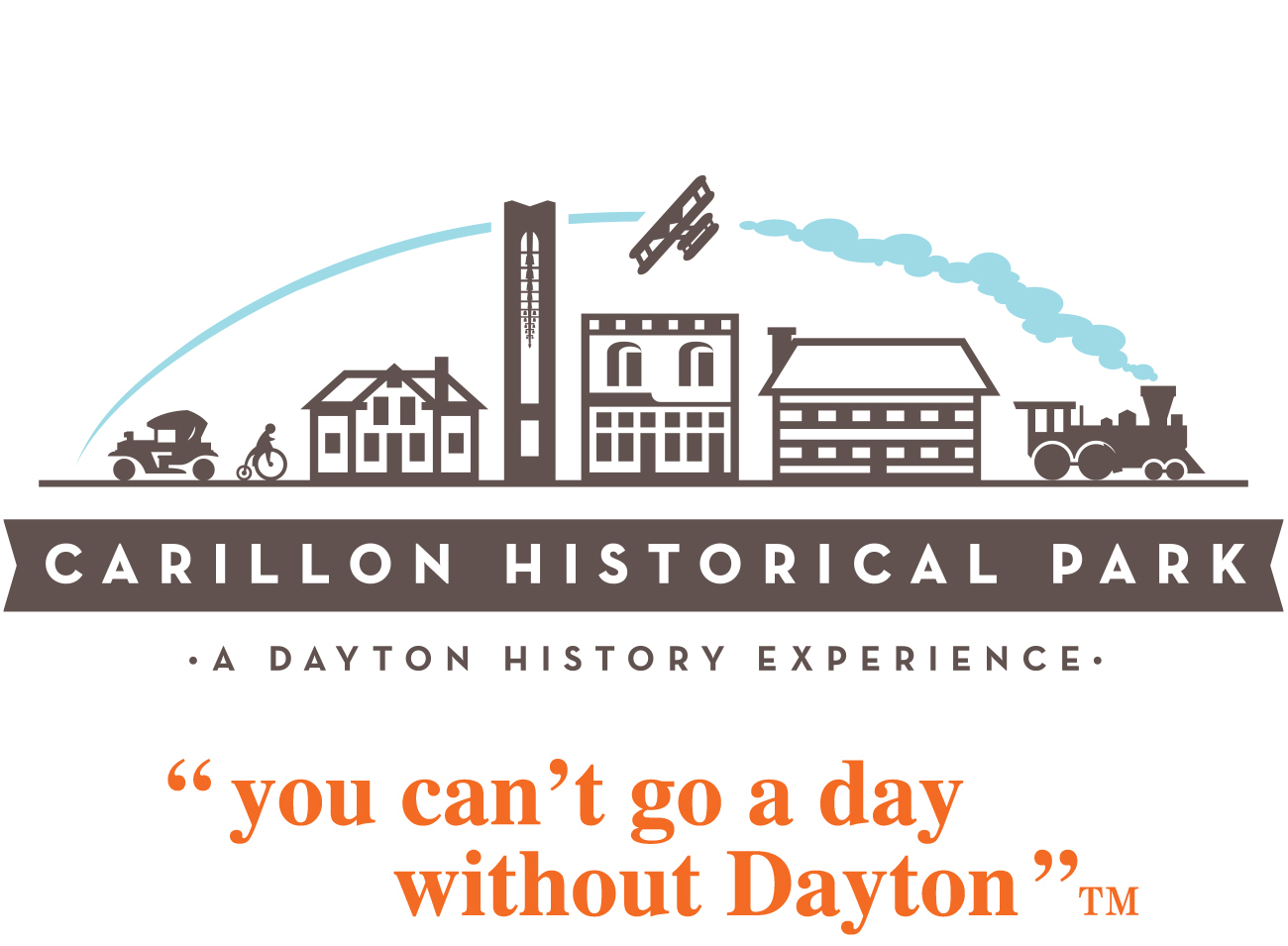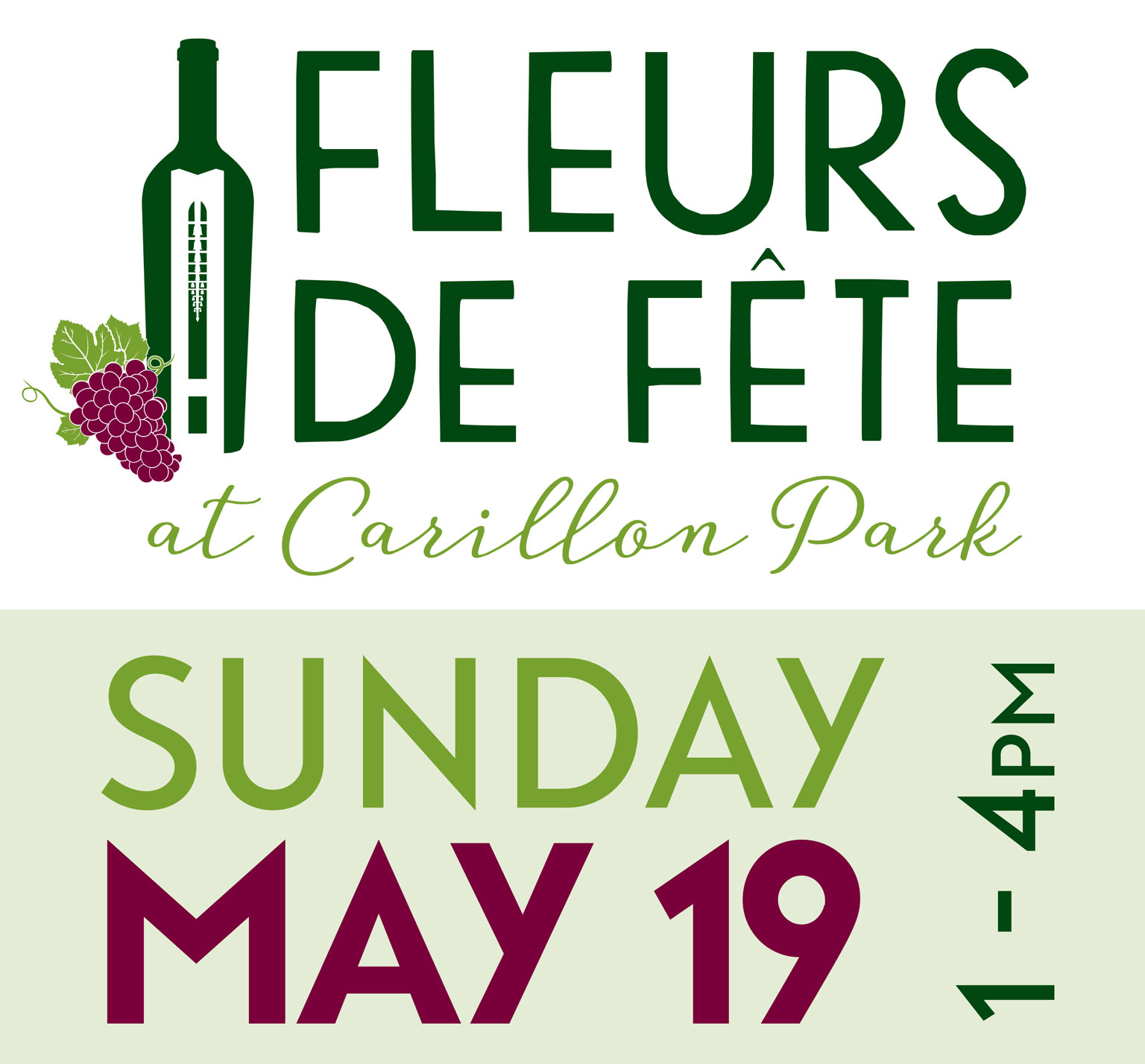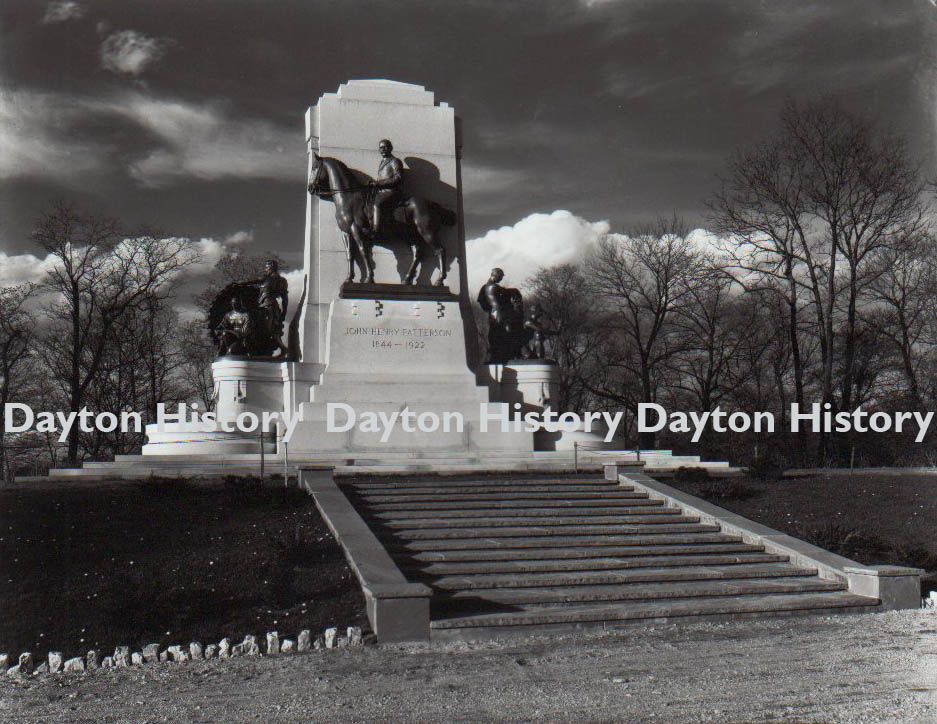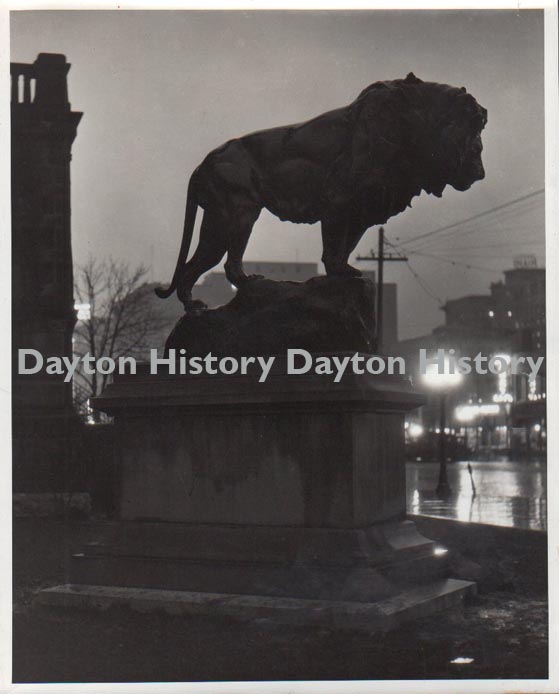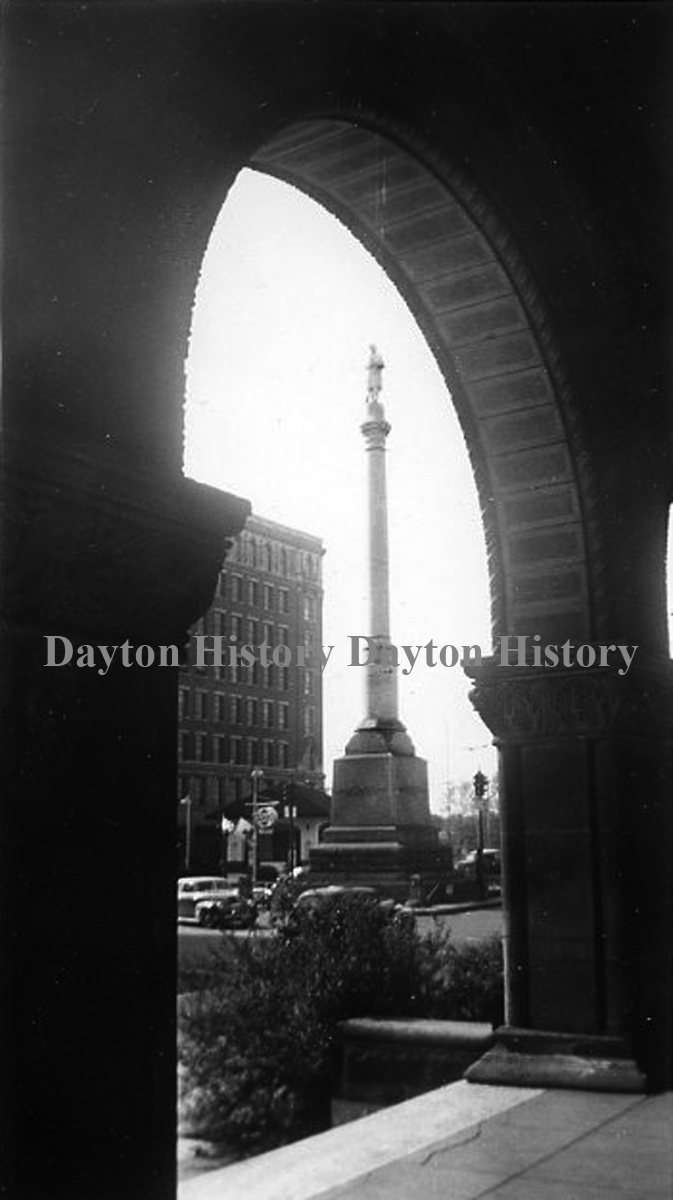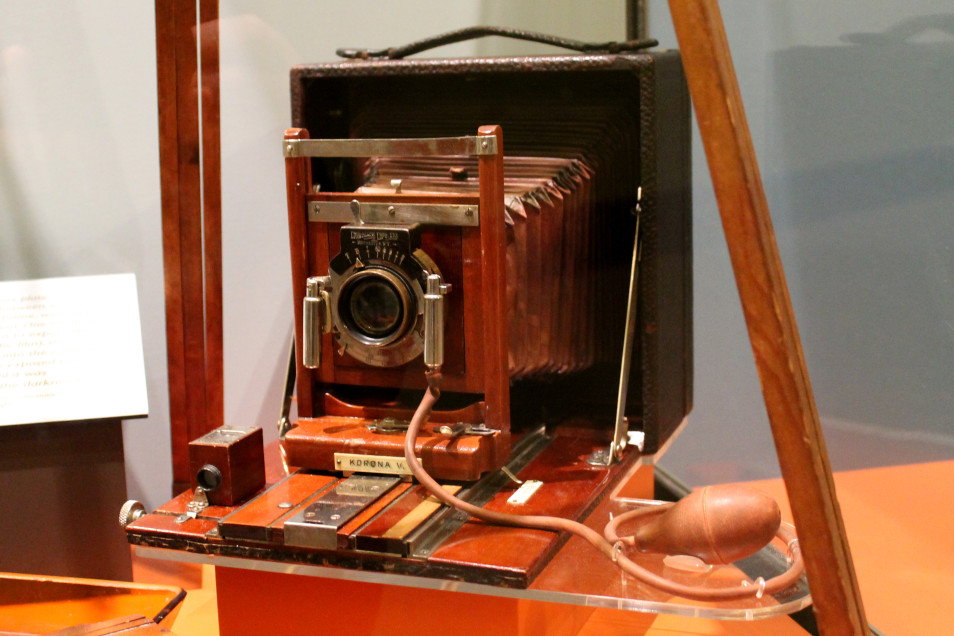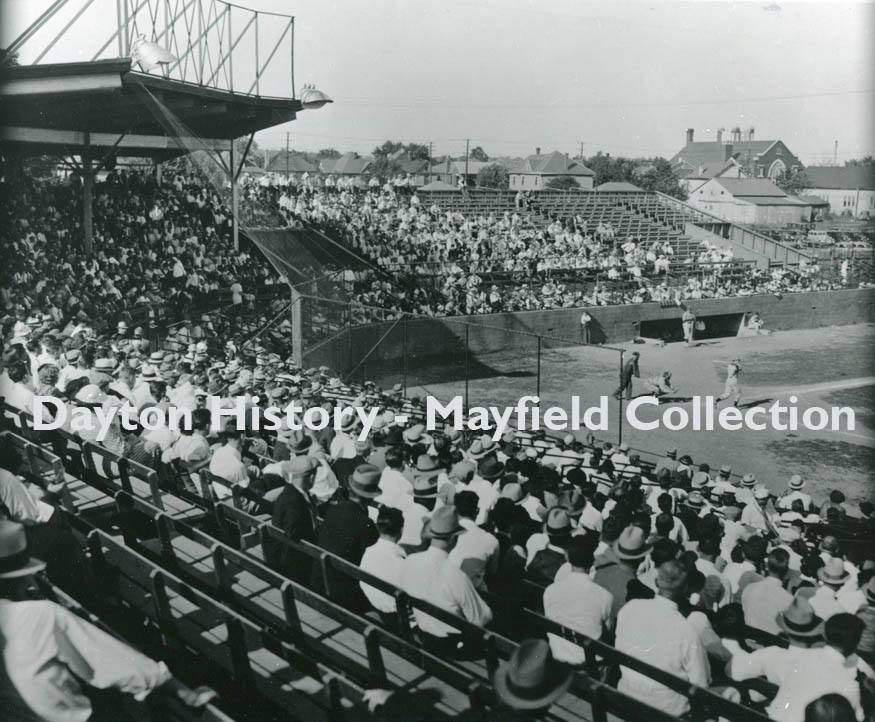ArtiFACT Friday – November 28, 2014
The Patterson Memorial…
The John Henry Patterson Memorial is located in Hills and Dales MetroPark. Situated on the crest of a hill inside the scenic park, the granite monument includes a stately bronze sculpture of John H. Patterson astride his horse, Spinner. The piece is then flanked by two allegorical figures on either side; one side representing education and industry and the other side representing progress and prosperity. Designed by sculptor Guiseppe Moretti and dedicated on May 26, 1928, the monument cost $92,000.00. The monument committee thought it would be fitting tribute to place the monument in Hills and Dales Park because Patterson had donated 325 acres of land to the City of Dayton in the early 1900s for the purpose of rest and recreation. This photograph is from Dayton History’s Image Collection.
To see other historical images from our collection, search our Digital Photo Archive.
ArtiFACT Friday- November 21, 2014
Leo the Lion…
Steele High School, opened to students in 1894, was built at a cost of $325,000 which, at the time, was an unprecedented amount. Consequently, there were no funds for the decoration of the interior of the facility. Shortly after its opening, the students and faculty alike banded together to form the Decorative Art Association. The fee for membership was five cents a month and these dues were collected by the students and placed in an account for the purchase of artwork. Within two decades, the group had purchased upwards of a hundred photographs, paintings and casts; including the magnificent bronze lion, nicknamed “Leo,” for the purposes of beautifying the school’s grounds. “Leo” was dedicated in December, 1908, and though raging waters temporarily knocked him off his pedestal, the sculpture managed to survive 1913 flood. Several decades later, when it was determined that Steele High School would be demolished, the majestic bronze lion was moved to the grounds of the Dayton Art Institute, where it can be seen today. The piece was restored to its original condition in 1986 by the Steele High School Alumni Association. This photograph is from Dayton History’s Image Collection.
To see other historical images from our collection, search our Digital Photo Archive.
ArtiFACT Friday- November 14, 2014
Private Fair Soldiers’ Monument…
Over the centuries, Dayton and its citizens have had much to be proud of: legendary industrial prowess, world-renowned feats, inventive genius and homegrown heroes are just a few examples of the city’s celebrated past. Like most other places, Daytonians have created monuments, memorials and various other landmarks to celebrate these incredible achievements. One such monument is the Private Fair Soldiers’Monument which currently consists of a bronze casting of a lone civil war soldier mounted on a limestone pillar, situated in downtown Dayton. Originally dedicated in July of 1884, in the center of the intersection of Main and Monument Streets, there have been conflicting reports as to whom the soldier is modeled after. With the advent of the automobile, the monument’s original location became problematic, causing a bottle neck in traffic flow, so the statue was moved to Sunrise Park in 1948. In 1991, as part of a Main Street redevelopment plan, the monument was returned to Main Street, just a few yards south of its original location. The monument was designed by Eleftherios Karkadoulias and originally featured a carved Carrera marble statue. Unfortunately, over the years, acid rain had damaged the statue so a bronze replica was made and re-installed as part of the downtown redevelopment plan. The original marble figure of Private Fair was installed and re-dedicated, in 1993, under a shelter at the Veterans Administration Hospital so as to protect it from further damage by the elements. This photograph is from Dayton History’s Image Collection.
To see other historical images from our collection, search our Digital Photo Archive.
ArtiFACT Friday- November 7, 2014
A Photo Opportunity of Historic Proportions…
The Wright Brothers Aviation Center at Carillon Historical Park is home to more original artifacts relating to Wilbur and Orville Wright than are displayed anywhere else in the world. Among these one-of-a-kind items is the 1902 Korona V camera used to take one of the most reproduced photographs in history, the snapshot of Orville Wright piloting the Wright Flyer on the first flight. Taken at approximately 10:35 a.m. on December 17, 1903, on a sand dune near Kitty Hawk, North Carolina, the photo has come to symbolize one of the great forward steps in human progress. After Orville Wright’s 1948 death, the camera was owned by his beloved nephew, Horace, who later donated it to Carillon Park.
To see other historical images from our collection, search our Digital Photo Archive.
ArtiFACT Friday- October 31, 2014
At the Old Ball Game…
Baseball has had a long history in the Gem City. Citizens have been gathering in various open lots and ball fields for over a century to cheer on their favorite teams, both amateur and professional. One popular venue for America’s favorite pastime was Hudson Field, also known as Ducks Park. The field, located at 2400 West Third, was originally built by native Daytonian and Major League player Howard ‘Ducky” Holmes in 1933, with a seating capacity of approximately 3,500. Holmes operated the ball park until 1942, when the Second World War put a stop to the Mid-Atlantic League, of which the Dayton Ducks was a member. The Brooklyn Dodgers Baseball Club had acquired the field in the late 1930s, and sold it back to the city of Dayton in 1945 in support of the Dayton Amateur Baseball Commission. Later that year, the field was rededicated as “Hudson Field” in honor of the late Sergeant Ben Hudson, an active member of the DABC. This photograph is from the William Preston Mayfield/Marvin Christian Collection at Dayton History.
To see other historical images from our collection, search our Digital Photo Archive.


